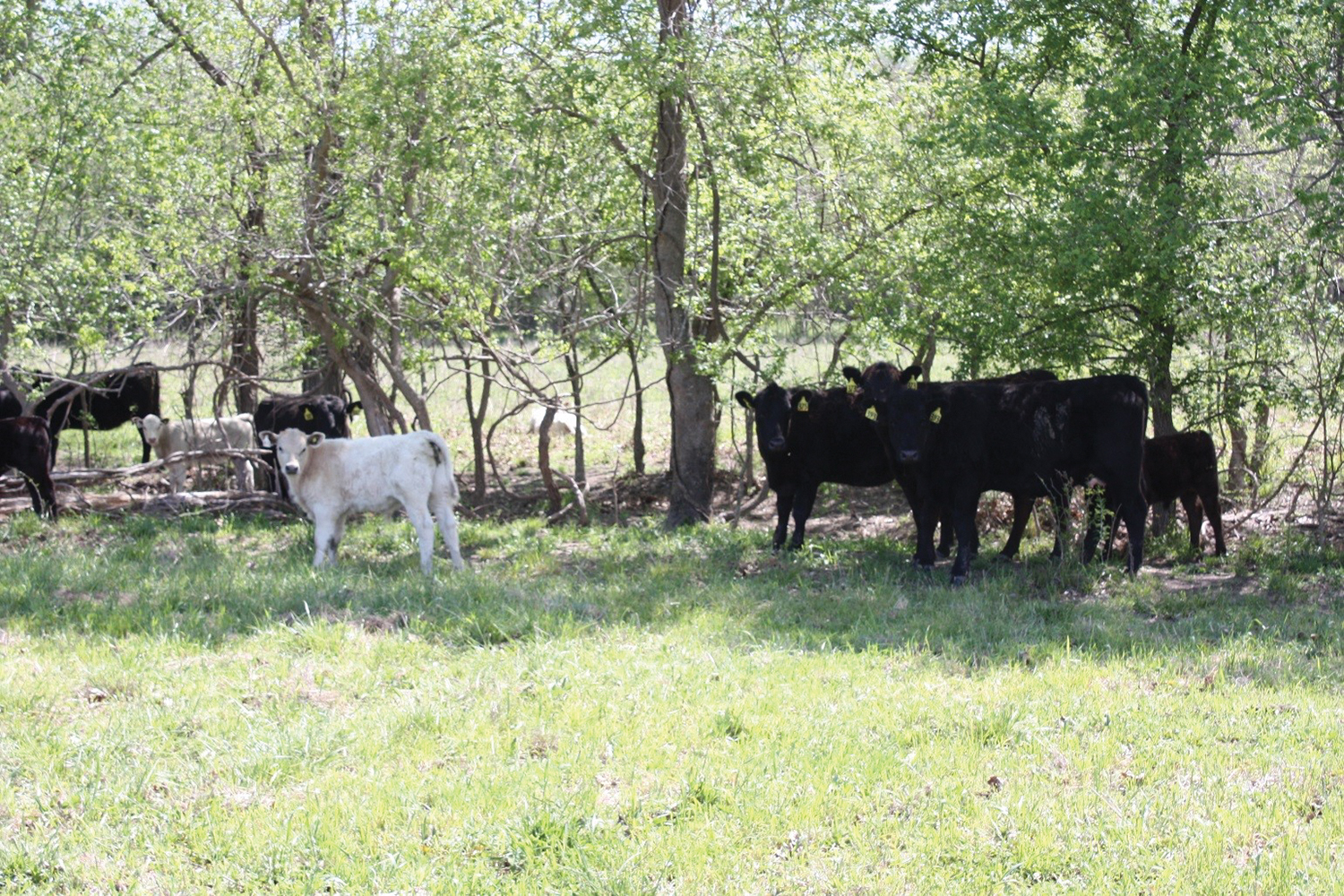
Agricultural News
Preventing Cattle Heat Stress Takes Priority in Summer
Mon, 28 Jul 2014 11:37:16 CDT

Summer is here and so is the heat. While animal owners are sure to give pets plenty of water and shade, it is just as important for ranchers to have enough water and shade for cattle and other grazing animals.
Noble Foundation Livestock Consultant Deke Alkire, Ph.D., explained that heat stress can greatly impact cattle performance through decreased milk production and subsequent calf growth, decreased reproductive performance in cows and bulls, and decreased stocker and feeder calf performance. The ideal temperature range in which beef cattle are most productive is between 41 degrees and 77 degrees Fahrenheit. When temperatures exceed this range, cattle are less productive and at greater risk of heat stress.
"If managed properly and allowed access to adequate fresh water and shade, cattle can tolerate summer temperatures, and, therefore, it is perfectly safe for them to remain outdoors," Alkire said. "However, ranchers must be aware of all the factors that impact the cattle's ability to handle the heat."
Many environmental factors affect the potential for heat stress, including relative humidity, wind speed, solar radiation, ground cover, access to water, diet, shade and nighttime temperatures. Individual animal characteristics can also contribute to heat stress, including hide color, breed, health, adaptation, hair coat length and disposition.
"When a combination of these factors and ambient temperature cause an animal's heat load to exceed its ability to dissipate that heat, heat stress occurs," Alkire said.
Like with humans, plenty of available water and adequate shade can be effective at reducing the effects of heat stress.
The minimum amount of shade required is 30 to 40 square feet for mature cattle, 20 to 25 square feet for feeder cattle and 15 to 20 square feet for stockers. If shade is limited, heat stress can be compounded by animals crowding together. If natural shade is inadequate, constructing permanent or portable shade structures is an option.
Permanent structures are more suitable for feeding pens and receiving or weaning traps but can be placed in pastures as well. "The initial cost of constructing a permanent structure is about $1 per square foot of shade but can vary depending on material costs in your area," Alkire said. "Portable structures are more expensive to construct but can be moved with the cattle, decreasing the number of units needed."
Other advantages to a portable structure include more uniform grazing, less pasture damage in the shaded areas and better manure distribution. Place shade structures in areas to take advantage of prevailing winds during the summer. Select areas with minimal slope to prevent erosion that can result from concentrated animal traffic. Manure will be concentrated in the shade areas and can contaminate ponds and streams.
"It is important to leave an adequate buffer along drainages to prevent nutrient runoff," Alkire said. "If possible, design shade structures in a long rectangle oriented north to south. This design spreads animals out and facilitates drying."
Both permanent and portable structures should be a minimum of 10 feet tall to allow adequate air flow. Permanent structures will require manure removal in heavy use situations. UV-resistant shade cloths that block at least 80 percent of light make good coverings, are inexpensive, can be easily replaced and allow for good air flow. Solid coverings are more expensive and last longer but are more susceptible to wind damage. Consider a taller structure if a solid covering is used.
"Every operation is different, and each pasture will have a unique need for shade," Alkire said. "The decision to construct shade structures should be based on animal welfare and economics. The cheapest option may be to plant more trees. If natural shade is limited, animals will benefit from shade structures, and, if well built, they should last many years."
WebReadyTM Powered by WireReady® NSI
Top Agricultural News
More Headlines...



















